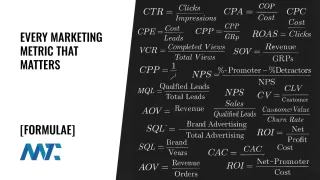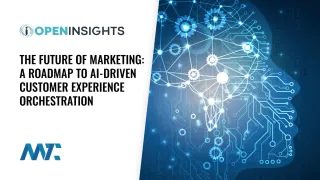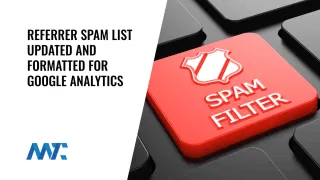Top 9 Ways to Save Time and Money with Marketing Automation

Automating repetitive marketing tasks like emails, social media updates, and other website actions can free up valuable time, allowing you to focus on bigger-picture strategies. Here are nine marketing automation strategies to help your business save time, money, and resources.
Table of Contents
Social Media Updates & Posts
Automating social media updates and posts is an effective way to keep your profiles active and consistently engage with your audience. Tools like Hootsuite, Buffer, and Sprout Social allow you to schedule posts across multiple platforms in advance, saving an average of 6 hours per week on manual management. We utilized the Revive Social plugin for WordPress, which has worked flawlessly.
Example: A small business can batch-create a month’s content in one sitting and schedule it all at once, ensuring their profiles stay fresh and relevant without daily attention.
Automation ensures your social media presence remains consistent by saving time on manual posting. It also frees up resources, allowing more real-time engagement and community management time.
Dynamic Content
Dynamic content automation tailors website content, product suggestions, and offers based on user behavior, increasing relevance and boosting conversions. With dynamic content, you can provide personalized experiences for each visitor.
Example: Amazon leverages dynamic content by displaying personalized product recommendations based on browsing history and past purchases. As a result, users are more likely to make additional purchases.
This approach enhances the user experience through personalization, driving an average 20% increase in sales. By anticipating user needs, dynamic content builds stronger customer relationships.
Content Amplification
Influencer marketing and content amplification are essential for broadening your reach. Automating your outreach to influencers and handling follow-ups ensures timely communication while freeing up time for other tasks. Automated systems can also help you track engagement and measure the effectiveness of your outreach.
Example: Use platforms like BuzzSumo or NinjaOutreach to find influencers in your niche and schedule follow-up emails, which can boost reply rates by 250%.
This approach increases brand visibility and reach, ensures consistent follow-up to maximize response rates, and offers a data-driven method to improve influencer relationships over time.
Client Reservations & Appointments
Automating appointment scheduling saves time on client management and reduces scheduling conflicts. Platforms like Google Workspace, Calendly, and Acuity allow clients to book appointments based on availability and integrate seamlessly with their calendars to avoid double bookings.
Example: A consultant can set up a scheduling link on their website, allowing clients to book consultations without needing back-and-forth emails, saving an estimated 80% of time previously spent on scheduling.
Streamlined booking makes it easy for clients to schedule at their convenience, reduces no-shows with automated reminders, and increases overall customer satisfaction.
Lead Management
Automated lead nurturing keeps potential clients engaged with timely, personalized emails and offers, keeping them in the sales funnel and increasing the chance of conversion. Tools like HubSpot and Marketo help manage and nurture leads automatically, sending targeted content based on where the lead is in the buying process.
Example: A real estate agency can use automated emails to share property listings and updates with leads who have expressed interest in similar properties, resulting in a 10% or greater revenue boost.
Automated lead management ensures timely follow-up, keeps leads engaged, and increases conversion rates, ultimately driving more revenue and improving overall sales efficiency.
Post-Purchase Email Series
Engaging customers after a purchase can improve customer retention and drive repeat sales. Automated post-purchase emails can thank customers, provide order details, and offer product recommendations for cross-sell or upsell opportunities.
Example: A retail store can set up an automated series of follow-up emails after a customer purchase, including a thank-you message, a product care guide, and an invitation to review the product.
These emails build customer loyalty and satisfaction, increasing the chances of repeat purchases while seamlessly introducing upsell and cross-sell opportunities to boost revenue.
Lead Scoring & Segmenting
Lead scoring and segmentation help prioritize high-quality leads based on demographics, behavior, or engagement level. With tools like Pardot and LeadSquared, sales teams can focus on leads most likely to convert, saving time and resources.
Example: A B2B company can assign scores to leads based on website visits, email opens, and interactions, allowing sales reps to focus on leads most likely ready to buy.
Lead scoring and segmenting identify sales-ready leads, reduce time spent on low-quality prospects, enable more personalized communication with high-value segments, and boost conversion rates.
Upsell Offers
Automated upsell offers maximize the value of each transaction by presenting customers with complementary products or services. With tools like SamCart, you can set up one-click upsells to increase order size.
Example: An online store selling skincare products can offer an upsell for a matching moisturizer at checkout, increasing the average order value by up to 360%.
Automated upsell offers reduce customer acquisition costs and improve customer satisfaction by increasing average order value through relevant product suggestions.
Incentive & Loyalty Programs
Automating incentive and loyalty programs rewards customers for their continued business, increasing customer retention and lifetime value. Platforms like Smile.io and LoyaltyLion can automate the entire process, from points distribution to reward redemptions.
Example: A coffee shop can automate its loyalty program to offer a free drink after every ten purchases, encouraging repeat visits without manual tracking.
Automated loyalty programs boost customer retention, encourage repeat purchases, and promote brand advocacy while providing valuable insights into customer behavior and preferences.
Incorporating these nine marketing automation strategies saves time and helps businesses allocate resources more efficiently, drive higher engagement, and ultimately increase revenue. The tools available today make it easier than ever to streamline these tasks so you can focus on growing your business more strategically.








